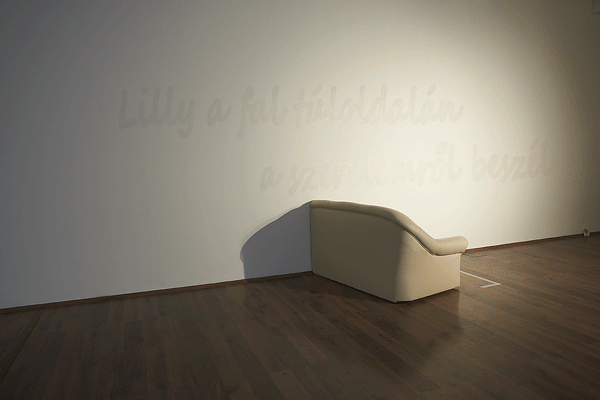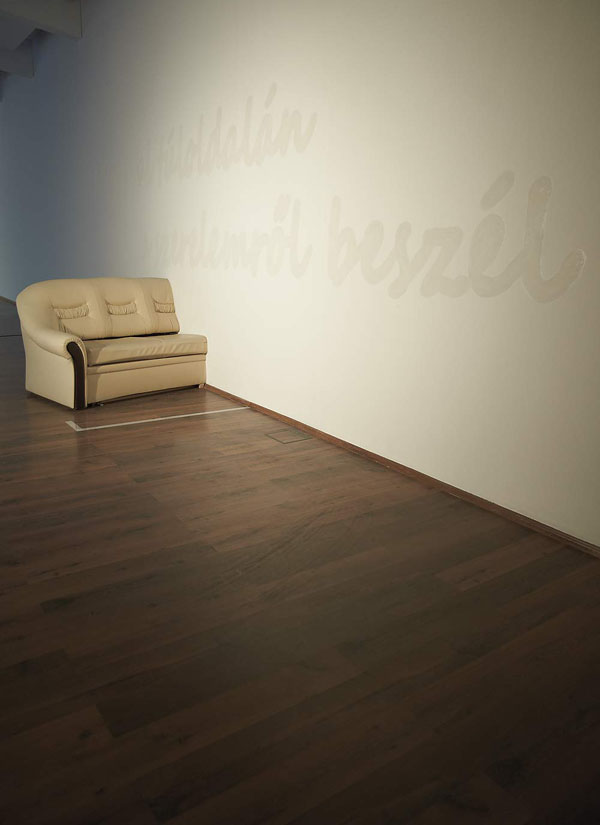| |
A kiállítóterem 30 méter hosszú fala egybefüggő és sérthetetlen egészként képezi a kiállítás tengelyét. A falon megjelenő szöveg és a falba olvadó tárgy képzeletbeli kiegészítése által a fal túloldalán lévő tér is a kiállítás részévé válik. A fal a fizikai világ és a képzelet birodalmának határát jeleníti meg. A túloldalon lévő részt a néző már maga hozza létre, de az installáció szempontjából azonos súllyal és egyenértékű szerepben mutatkoznak.
Vajon melyik világ kedvesebb számunkra, a jól ismert és megtapasztalt tér, vagy a fal túloldalán lévő, ahol Lilly a szerelemről beszél, és ahol bármi megtörténhet? De vajon miről
beszél Lilly egészen pontosan? Vajon a szerelemnek miért kell a fal túloldalára kerülnie? |
The 30-metre long wall of the exhibition room is the incompromised axis of the exhibition. The text written on the wall and the object placed under this are melting into the wall and suggests that the exhibition is continued on the other side of this wall to where we can enter only with our imagination. The wall turns into a margin between real and imaginary worlds. The imaginary is created by the viewer, yet in the installation both worlds are presented with the same importance and weight.
In which world are feel more at home? In the real or in the imaginary where anything can happen? What exactly is Lilly talking about? And why is love placed to the other side? |
|


